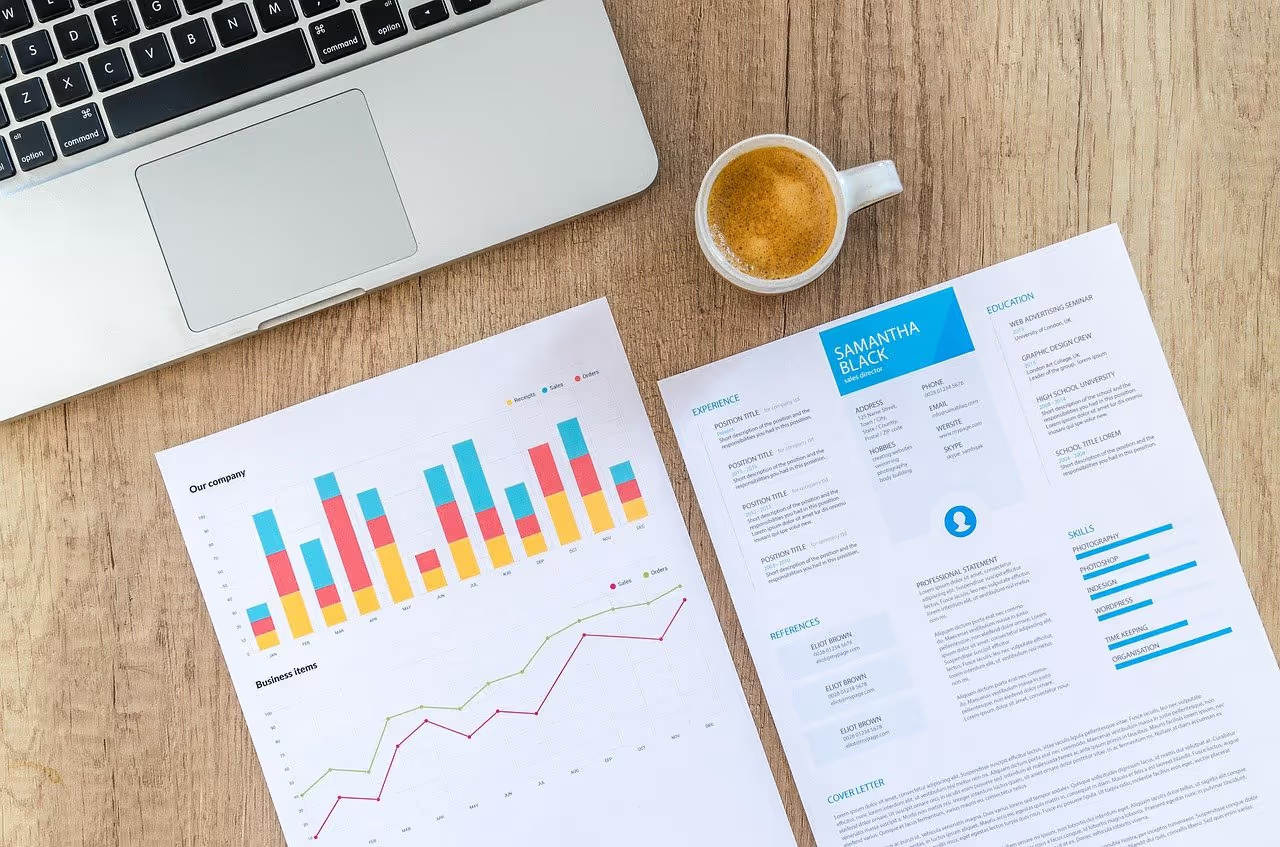
In the last 30 years, the world has changed from an analog to a digital world. What used to be done by telephone or fax is now mastered via email or app. The technologies we will use in the future are still in the stars. But one thing is clear: The digital revolution is in full swing and we are only at the beginning of a thoroughly digitalized world. This applies not only to our private lives, but also to business.
Many companies have recognized the signs of the times and are currently digitizing their business processes, some have already done this in the past, young companies rely on digital processes right from the start. In fact, all areas of the company are affected by digitization: accounting, sales, logistics, purchasing, service: business processes in all departments are now digitally represented. Each department often works with its own software for this purpose, which sometimes leads to a lot of sand in the business process.
Right here comes a so-called ERP system to wear. ERP means enterprise resource planning and, strictly speaking, affects all business resources: tangible and intangible assets, cash flow, receivables, people, information, data, documents, customers, time. Company-wide resource planning should actually map all components and processes that have to do with a company.
What is an ERP system?
In operational reality, enterprise resource planning usually refers to the core areas of a company such as purchasing, accounting, human resources, logistics, services, finance and production. Today, ERP often still resembles a patchwork quilt, as purchasing, for example, also affects the areas of ordering, inventory management, manufacturing, logistics, implementation, billing, maintenance and service, complaint processing, and document flow. In this case, a consistent mapping of all processes can be achieved by integrating various modules. The following applications are now grouped under the term ERP:
- Financial accounting
- Fixed asset accounting
- Payroll
- Reckoning
- Purchasing
- Project Management
- E-Commerce
- Inventory management
- Production planning and control
- Warehouse Management and Logistics
- Document management

Even large ERP systems do not cover all areas of a company and should therefore be supplemented by appropriate systems. This includes, for example, a CRM (customer relationship management), a document management system (DMS) or a production planning and control system (PPS).
In the context of digitization, companies must rely on a uniform ERP system in order to be able to map all of their processes. But what are the other benefits of a standardized ERP system?
1. Process optimization
When the online store shows whether items are still in stock. When the ordering system is linked to the logistics department and other fulfillment providers, and when the purchasing department knows when certain items are in higher demand and inventory needs to be increased, processes run more smoothly and quickly. An ERP system can be used to map these and other best practices in companies. This process optimization usually means that employees have more time for other tasks and the error rate is significantly reduced by eliminating manually maintained Excel lists or individual, proprietary solutions.
2. Uniform data and better information
Maintaining warehouse or order lists in Excel or other file formats and using individual software solutions for accounting or inventory management, for example, not only means a high risk of errors and significantly higher expenditure, but at the end of the day there is also a lack of a common data basis. With the help of an ERP system, sales, logistics, accounting and purchasing can access common and uniform data and extract the information that is important to them.
3. Collaboration
It is this common, consistent data basis that makes cross-departmental cooperation possible in the first place. By integrating other systems such as document management, project management or CRM, all departments can use a system with the same data and work together even over a long distance. These results in better internal coordination and communication. Better collaboration in turn leads to higher employee motivation and greater customer satisfaction, as questions and problems can be resolved more quickly.
4. Reporting
But the consistent data basis enables even more: analysis and evaluation. KPIs can be analyzed and evaluated company-wide. An ERP system enables both standard reports and individual evaluations. Based on these reports, a company's management can derive recommendations for action, carry out further process optimizations and drive company growth.
5. Data quality
The uniform data basis increases the quality of the data to a large extent. What was previously often compiled manually in Excel lists or kept twice in various systems is standardized and automated with an ERP. Sources of error and data loss due to transmission errors are thus eliminated and the consistency of the data is ensured. A valid database in turn contributes to process optimization, cost reduction and better reporting.
6. Costs and time
However, a uniform ERP lowers business costs not only by standardizing data. Optimized processes from purchasing to dunning, saving employees time through automation and also higher acceptance and the associated motivation of employees ultimately reduce costs in the company. The use of an ERP system usually also consolidates the IT infrastructure in a company. This not only makes IT costs more transparent; in most cases, an ERP even opens up opportunities for savings. ERP systems process processes efficiently. This means that the manual effort of entering data and corresponding, recurring work is eliminated. Thanks to process-oriented workflows, automated and manual work are seamlessly intertwined. This reduces unit labor costs and lead times. Working with an ERP system leads to greater efficiency and productivity.
7. Employee motivation
The advantage of IT systems: Boring, repetitive tasks are taken over by IT systems, including an ERP system. This increases employee motivation, as the incidence of errors is also reduced and processes are simplified. You can concentrate on other, essential tasks and the overall workload is reduced. Happy employees, on the other hand, are more productive and motivated.
8. Customer satisfaction
An ERP ensures transparent ordering, faster processing of orders and much more. However, direct contact with the customer is still decisive for a high level of customer satisfaction. The increased employee motivation described above also leads to greater customer satisfaction in direct customer contact: Satisfied employees make for satisfied customers.
Conclusion
There is no way around digitization. During this change process, companies are faced with the choice of whether they want to digitally map their processes with various software solutions or whether an ERP system should be used. As described above, the advantages of an ERP solution are obvious. However, many companies are reluctant to make the switch, as such a project is time-consuming and costly. In addition to large ERP systems, there are now also so-called lean ERP systems (e.g. Odoo or xentral), i.e. lean ERP systems that can be implemented much faster and connected to many other systems through interfaces. The know-how of the implementation partner is decisive in an ERP project. He should not only be familiar with software and programming, but also with business processes. This is the only way to define process optimizations in advance of such a project and implement them later. Employee onboarding is just as important. Here, too, the partner should be well positioned, the use of an ERP depends on the acceptance of employees.
Interested in a personalized consultation about the project?
Simply describe your project briefly and our team will get back to you with suitable ideas or initial solutions.


